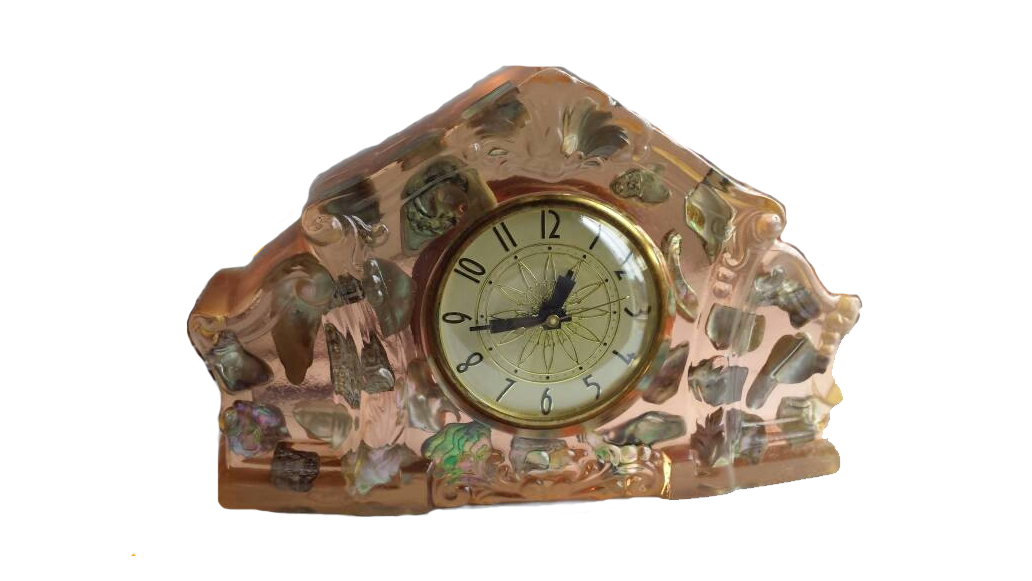
Welcome To The Vomit Clock Museum
The Vomit Clock Museum is a digital museum cataloging the history of object-embedded resin clocks, colloquially known as “vomit clocks.” These acrylic resin clocks, typically produced in the 1950s, 1960s, and 1970s, provoke intrigue and curiosity from those who behold them. Some revile them, some love them – either way, these clocks are a time capsule into the style and home decor of decades past—an interesting and vibrant slice of mid-century Americana.
Sign up for Updates
Sign up to be notified of new research and updates from the Vomit Clock Museum!
Visit our collection of resources. Read our blog and learn more about the history behind this movement. We are adding new information as we uncover it!
Do you have molds, photos, stories, or scholarship that will improve our digital museum? We welcome your submission!
Resources & Posts from the Vomit Clock Museum
View all the Vomit Clock Museum posts and resources on our Resources page!
The History of Holland Molds
In 1900s Austria, a young man working at a tile company named Frank Hollendonner learned how to make ceramic molds for pouring tiles. This young man would soon make his way from Austria to New Jersey, expanding his talent for mold making into ceramic molds used for...
Peak’s Craft and Paints: The Resin Clock Makers
Outside a small craft store in Birmingham, Alabama, a man pours plaster molds in a makeshift plant of rough sheets of plywood on top of dusty sawhorses. These plaster molds, soon to be distributed around the country and designed for the typical ceramic vases or...
Rare 3 Piece Vomit Clock with Matching Figurines
When Windy J. first saw this rare set - a vintage resin clock (a "vomit" clock) with MATCHING resin owl figurines - they thought "these are either the ugliest items or the most unique items I have ever seen!" And it's true - vomit clocks often inspire these types of...
The Different Types of Resin
Resin is a solid or highly viscous substance of plant or synthetic origin that can usually be converted into polymers. They are usually made of organic compounds, and resin that is naturally-sourced comes from plants. Plants secrete resin in response to an injury,...
The Strange History of Orgone Resin
Orgone resin, unlike lucite, has a long and complicated origin story. Get ready for a wild ride. In the 1930s, an Austrian doctor of medicine and a psychoanalyst named Wilhelm Reich discovered--supposedly--an “all-permeating cosmic life force” that he called orgone....
The History of Lucite
Lucite, one of the trade names for the chemical compound polymethyl methacrylate, also known as acrylic, acrylic glass, or plexiglass, is a fascinating material used in a startling variety of ways. The compound is a transparent thermoplastic that is used as an...






